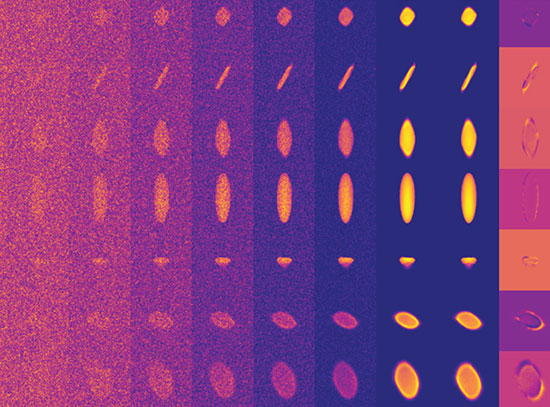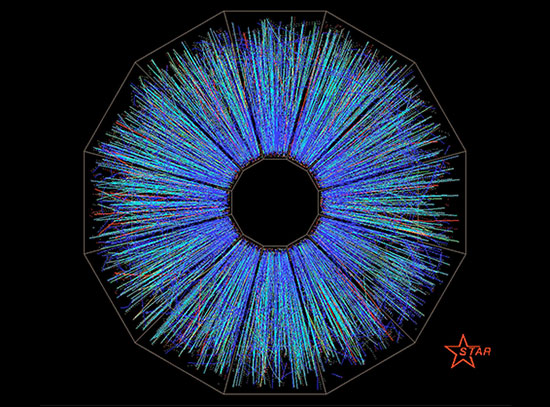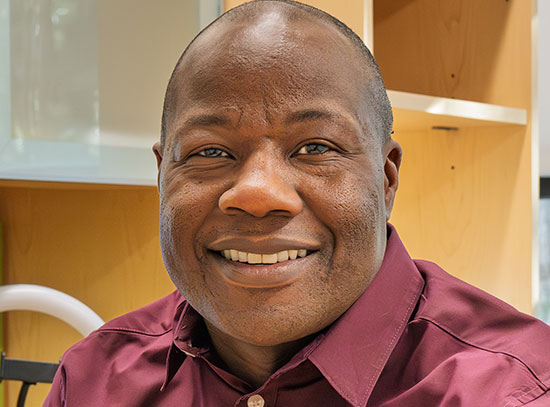Department of Energy Seeking Public Comment on Final Groundwater Cleanup Decisions
December 22, 2004
NOTE: The following news release is being issued by the U.S. Department of Energy and Brookhaven National Laboratory. DOE contact: John Carter, 631-344-5195, BNL contact: Peter Genzer, 631-344-3174.
UPTON, NY - The U.S. Department of Energy (DOE) is seeking public comment on a document finalizing cleanup decisions for groundwater contamination in several areas at and near Brookhaven National Laboratory (BNL). The document, known as the Operable Unit III Explanation of Significant Differences (ESD), details decisions on several actions that were not finalized in a June 2000 groundwater cleanup agreement.
DOE will accept comments on the ESD from December 15, 2004, through January 21, 2005. The document is available on the BNL web site and in local libraries.
Background
In June 2000, DOE, the U.S. Environmental Protection Agency (EPA), and the New York State Department of Environmental Conservation (NYSDEC) agreed to a series of cleanup activities to remove contamination in groundwater at and near BNL. These decisions were described in a "Record of Decision," or ROD. Most of those cleanup activities are well under way, and all groundwater systems are installed and operating. Three cleanup decisions, however, required additional action to be final:
- The ROD held open the option of a remedy to clean up the Magothy Aquifer - an area of water-saturated sand beginning about 200 feet below ground and descending several hundred feet - until additional groundwater wells were installed and sampling and analysis were completed.
- The approach for cleaning up two areas of groundwater on the Lab site containing strontium-90 has been modified based on a pilot study done to evaluate the effectiveness of the proposed cleanup technology.
- Underground debris near a building in the center of the Lab site has been investigated and removed.
Changes to Record of Decision
Magothy Aquifer - The ROD stated that the need for a Magothy remedy would be evaluated by the DOE, EPA, and NYSDEC after additional sampling and analysis activities were completed. These agencies and the Suffolk County Department of Health Services (SCDHS) now agree that a remedy to remove chemicals from the Magothy Aquifer is appropriate.
The remedy for the Magothy Aquifer calls for:
- Continuing operation of existing groundwater extraction wells (part of the Upper Glacial Aquifer treatment systems) that capture Magothy contamination
- Operating extraction wells for approximately 10 years; continuing monitoring for about 55 years to meet drinking-water standards
- Installing two additional off-site Magothy extraction wells to capture high concentrations of chemicals and prevent additional contamination from entering the Magothy Aquifer; this work was completed last summer
- Continuing monitoring and data evaluation to ensure protectiveness
- Maintaining institutional controls and five-year reviews
Strontium-90 - The original investigation identified two strontium-90 "plumes" (areas of groundwater contamination), one near the Brookhaven Graphite Research Reactor in the center of the BNL site, and the other associated with a former waste disposal area in the south-central portion of the site. No on-site drinking-water wells are near these plumes, and strontium-90 groundwater contamination has not been detected off of the BNL site.
The ROD called for a pilot study to evaluate the effectiveness of an extraction well and ion-exchange process for cleaning up strontium-90. The study demonstrated that strontium-90 can be removed from the groundwater, but that when water flows through the filters quickly, the filters capture and hold minerals and other natural impurities in addition to the strontium-90. As a result, the filters need to be changed much more frequently than anticipated, and the cost of the originally proposed rate of treatment would be much greater than originally assumed in the ROD.
Slowing down the rate at which groundwater is treated will extend the life of the filters, allow the system to operate more efficiently, generate less waste, and reduce overall operational costs. Because strontium-90 moves slowly, it is removed as effectively at low flow rates as at high flow rates, and computer modeling shows that, even at the lower flow rates, the strontium-90 contamination will stay entirely on Laboratory property. It will, however, take longer to reach drinking-water standards. Periodic regulator reviews of treatment progress will ensure the effectiveness of this protective measure.
The remedy for strontium-90 calls for:
- Maintaining the same cleanup goal (the drinking water standard) for strontium-90 groundwater contamination
- Continuing active treatment, but at a more efficient flow rate
- Allowing up to 70 years instead of 30 years for some of the work to be completed
- Limiting the "footprint" of contamination
- Ensuring that the contamination will not cross the site boundary
- Continuing monitoring to verify that the cleanup is working as expected
- Maintaining institutional controls and five-year reviews
Building 96 - Decades ago, the area south of Building 96 (in the center of the BNL site) was used as a scrap yard and for 55-gallon drum storage. Because this area was a potential source of chemical contamination, surveys were performed during 1999. Several anomalies were identified, indicating the potential presence of foreign or man-made objects buried in this area. Based on these results, the ROD recommended exploratory excavations to investigate the anomalies, and 21 were performed in March 2004. The work crew found pieces of concrete, scrap metal, and iron-stained soils. No contamination was detected, and no further action is necessary.
The DOE, EPA, and NYSDEC agree that none of these changes fundamentally alters the remedy selected in the ROD. This remedy remains protective of human health and the environment, and complies with federal and state requirements identified in the ROD.
Public Participation Activities
While a public comment period is not required when issuing an ESD, DOE is interested in receiving public input on these changes. DOE will accept comments on the ESD from December 15, 2004, through January 21, 2005. To submit comments, interested parties may send an e-mail to tellDOE@bnl.gov, fax to (631) 344-3444, or write to: Mr. Michael Holland, attn: ESD, Site Manager, Brookhaven Site Office, U.S. Department of Energy, PO Box 5000, Upton, NY 11973.
A public information session about these changes will be held on January 11, 2005, from 7-9 p.m. at BNL_s Berkner Hall, Room B. Interested members of the public are invited to learn more about the ROD changes and cleanup projects.
The ESD is available for review on the web, at http://www.bnl.gov/erd/groundwater.html, and at the Mastics-Moriches-Shirley Community Library in Shirley, BNL Research Library in Upton, and the EPA - Region 2 Library in Manhattan. If you wish to learn more about the groundwater cleanup, please attend an informational session scheduled for January 11, 2005, 7-9 p.m., in BNL_s Berkner Hall, Room B. Please note that all visitors to Brookhaven Lab age 16 and older must present photo identification for admission to the Laboratory.
Environmental remediation at Brookhaven Lab is carried out under requirements of the federal Comprehensive Environmental Response, Compensation and Liability Act of 1980. Past operations at the Laboratory resulted in soil and groundwater contamination. Remediation work is conducted under the framework of an interagency agreement among the U.S. Department of Energy, the U.S. Environmental Protection Agency and N.Y. State Department of Environmental Conservation. The Department of Energy owns the Brookhaven property, and oversees and funds the cleanup program.
2004-10260 | INT/EXT | Newsroom









